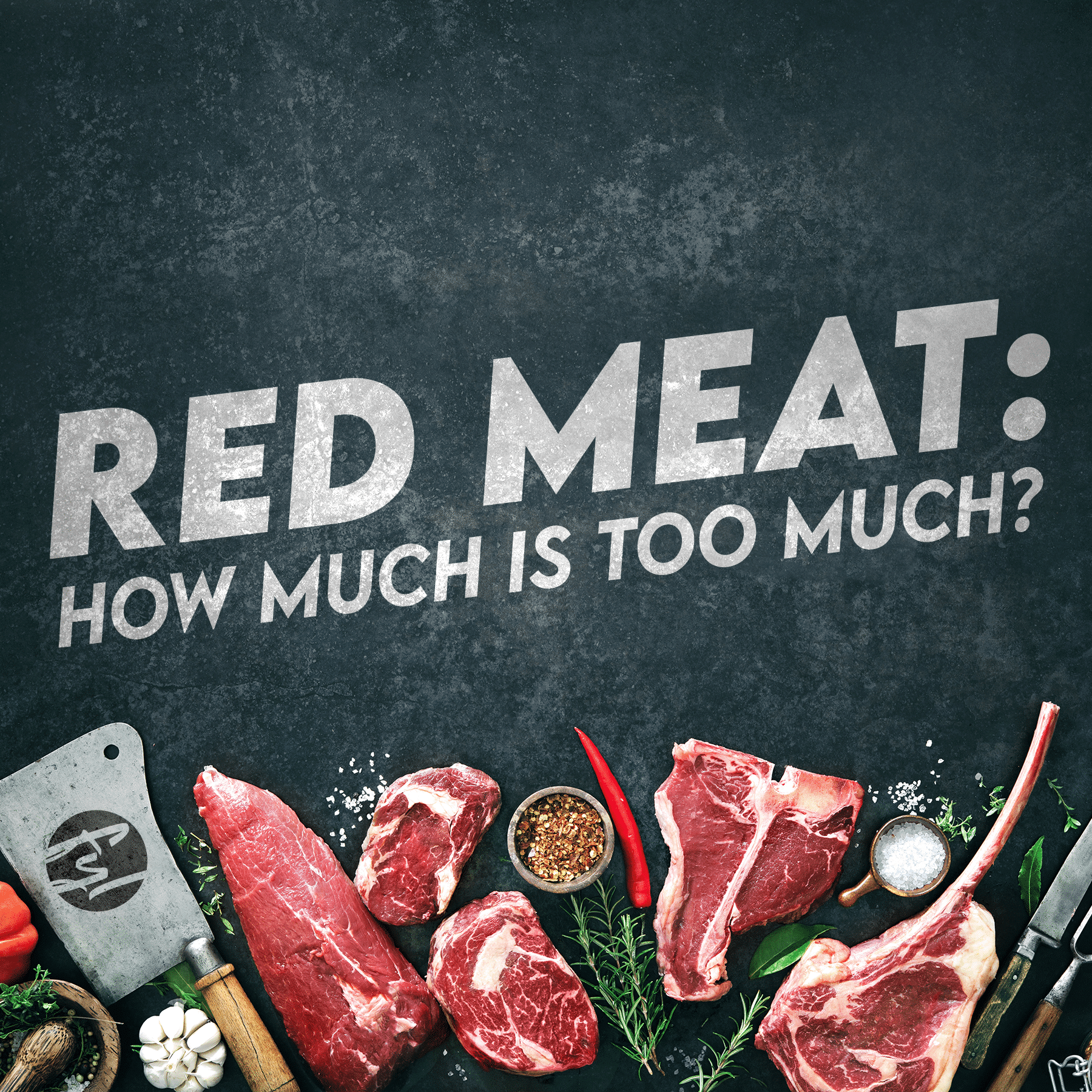Red meat is a common dinner time staple for most Australian households. Whether it’s a juicy steak, some rissoles or a hearty bolognese sauce, we typically eat red meat at least twice per week. And while red meat is a good source of protein, iron, zinc as well as B vitamins, consuming too much can have detrimental effects on our health.
But, How Much Red Meat Is ‘Too Much’?
The research suggests that more than 700g per week of red meat is associated with an increased risk of cardiovascular disease, colon and bowel cancer and there is some emerging evidence to suggest there may be a link between higher intakes of red meat intakes and the development of Type 2 Diabetes.
According to the ABS Australian Health Study (2011-2012), the average male eats 680g of red meat per week. This is a third higher than the average intake for women and almost double the recommended intake. Therefore, there are definitely many men and women that are eating way too much meat.
How Much is ‘Just Right’?
The Australian Heart Foundation recommends we eat no more than 350g of red meat per week to help reduce the risks associated with this excess. It is very easy to hit this target if you have an average steak ~250g, as well as some beef sausages or rissoles and a serving of spaghetti bolognese, it is actually really easy to exceed the recommended 350g per week.
But it’s not just red meat we need to be conscious of. Even a small amount of processed meat each day has been linked with an increased risk of cancer. The International Agency for Research on Cancer has found just 50g of processed meat per day increases your risk of bowel cancer by 18%. The evidence suggests that processed meats are a class 1 carcinogenic, meaning there is strong evidence that supports processed meats cause cancer. Processed meats include ham, bacon, devon, frankfurts, chorizo, cabanossi and Kransky and these pose a much greater risk in our diets than red meat itself. So if you are an avid meat eater and love ham on your sandwich every day or have bacon and eggs at least once per week, it would be the best place to start by limiting these to no more than once per month and gradually replacing your meat with other tasty alternatives.
Does This Include ALL Red Meat?
Highly processed meats are not only higher in fat than their steak counterparts, but they also contain the carcinogenic compounds called nitrates which increase the risk of cancer. These processed meats are also generally higher in fat and sodium as well. While sausages aren’t considered ‘processed meat’, they are high in fat and sodium, which means their intake should also be limited to occasionally. Lean, unprocessed meat options are the best and include kangaroo, pork (excluding ham and bacon), lean beef mince (fat % of less than 5%), sirloin tip, round and eye fillet.
Does This Apply To EVERYONE?
The Heart Foundation recommendations are important for all Australians, however, they’re particularly important for males. Men already consume more red meat than their female counterparts and are at higher risk of adverse health outcomes. Individuals with high cholesterol or a history of heart disease should also take meat consumption seriously. But it’s not just the quantity of red meat that’s important, it is also the quality of the total diet. People who have poorer quality diets that are low in whole grains, vegetables and healthy fats or have a high alcohol intake are also at higher risk of developing heart disease and cancer and should look to limit their red meat intake.
So, How Do I Reduce My Red Meat Intake?
Now, we know that there are a lot of red meat lovers in the crowd, and we don’t want to discourage you from eating the foods you love. However, if your red meat intake is well over the recommended amount and have some of the above additional risk factors then we have some ideas for how you can start to adjust your intake;
-
Swapping
Swap 1-2 meals of red or processed meat for chicken, fish or plant and grain-based meals. This achieves the same benefit.
-
Portions
Reduce or adjust your portions, you can choose to have one large 350g T-bone steak per week, or split your red meat intake over a few smaller portions, e.g. 2 meals of 175g, e.g. 2 small lamb chops equating and 2 small pork rissoles.
-
Recipe Modification
Try adjusting your fav recipes to reduce the amount of red meat used. For example, reduce the meat in your rissole recipe by half and add in ½ a can of mashed 4 bean mix or chickpeas. Use tofu or prawns in a stir fry dish instead of meat. Try substituting red kidney beans or black beans in a Mexican dish instead of mince.
If you’d like to learn more about how to optimise your physical and mental health with food, explore our latest online nutrition programs. The self-guided courses were developed by Fuel Your Life’s Accredited Practising Dietitians and focus on improving your life, work performance and mental health. For more personalised nutritional advice, chat with one of our experienced dietitians and get started today.







